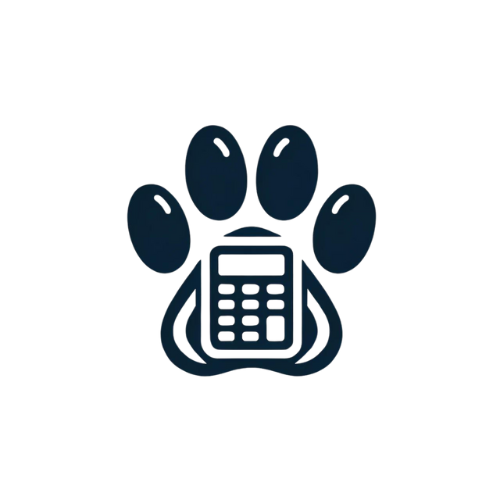How To Use
This tool helps estimate the daily calorie requirements for your dog based on their weight, activity level, life stage, and body condition.
Simply fill out the fields and click Calculate to get started.
- Enter your Dog's Weight in pounds.
- Select the Activity Level of your dog.
- Select the Life Stage of your dog.
- Select the Body Condition of your dog.
- Click the Calculate button to see the estimated daily calorie requirement.
Dog Nutrition Calculator

Fill Out The Fields Below
Result
Understanding Your Dog's Body Condition
| Condition | Description | Visual/Physical Cues |
|---|---|---|
| Underweight | A dog is considered underweight if it has too little body fat and muscle mass for optimal health. | - Ribs, spine, and hip bones are prominently visible - Little to no fat can be felt - Waist and abdominal tuck are very pronounced - Loss of muscle mass may be noticeable |
| Normal | A dog is considered to be at a normal weight if it has a healthy balance of body fat and muscle mass for its size and breed. | - Ribs can be felt but not seen - Waist is visible behind the ribs when viewed from above - Abdominal tuck is present when viewed from the side - Body appears well-proportioned and muscular |
| Overweight | A dog is considered overweight if it has too much body fat for its size and breed, which can lead to health problems. | - Ribs are difficult to feel under a layer of fat - Waist is not easily visible or absent - Abdominal tuck is minimal or absent - Fat deposits around the lumbar area and base of the tail |
Activity Levels
| Activity Level | Description | Examples |
|---|---|---|
| Low | Minimal activity, mostly indoor, limited play | - Short walks - Limited playtime - Primarily indoor lifestyle |
| Moderate | Regular activity, both indoor and some outdoor play | - Daily walks - Regular playtime - Mix of indoor and outdoor |
| High | High activity, lots of exercise, primarily outdoor | - Long walks or runs - Frequent active play - Outdoor lifestyle |
FAQs
How much food should I feed my dog per day?
The amount of food your dog needs per day depends on their age, size, breed, and activity level. Use a dog nutrition calculator to determine the appropriate portion sizes.
What type of food is best for my dog's breed and age?
The best type of food for your dog depends on their breed, age, and specific health needs. Consult with your veterinarian to choose the most suitable diet for your dog.
How can I ensure my dog is getting all the necessary nutrients?
Ensure your dog is getting all the necessary nutrients by providing a balanced diet that includes high-quality dog food formulated for their life stage. Regular vet check-ups can also help monitor their nutritional health.
What are the signs of nutritional deficiencies in dogs?
Signs of nutritional deficiencies in dogs can include weight loss, dull coat, skin issues, lethargy, and digestive problems. Consult your veterinarian if you notice any of these symptoms.
How do I adjust my dog's diet for weight loss or gain?
To adjust your dog's diet for weight loss or gain, gradually change their portion sizes and choose foods with appropriate calorie content. Consult your veterinarian for a tailored diet plan.
Looking to help your dog lose weight? Check out our Dog Weight Loss Calculator for a personalized weight loss plan with calorie deficits, feeding schedules, and timeline estimates.






